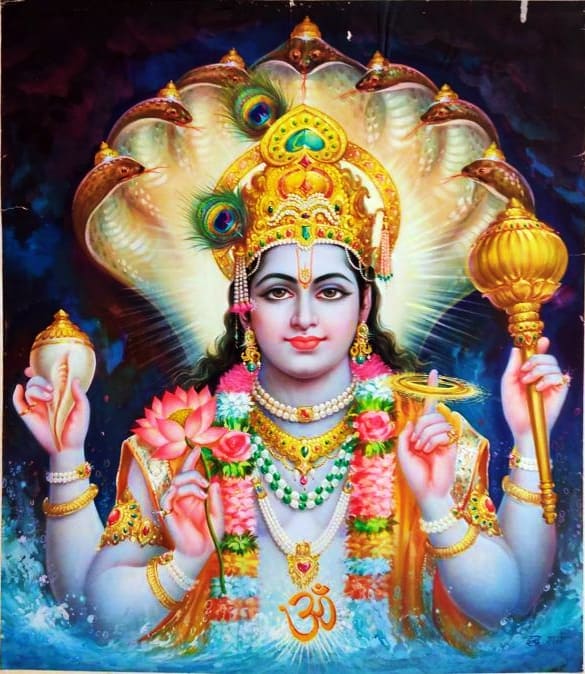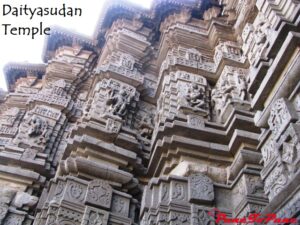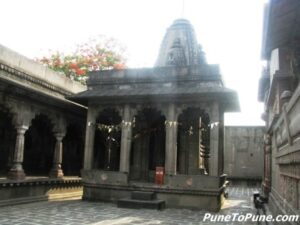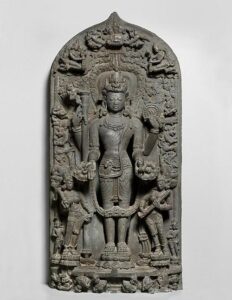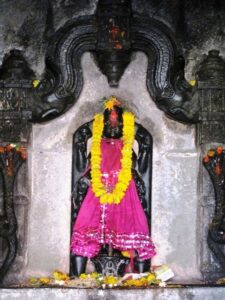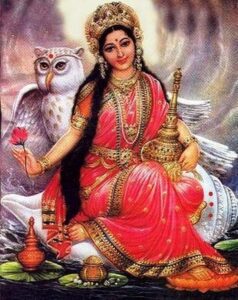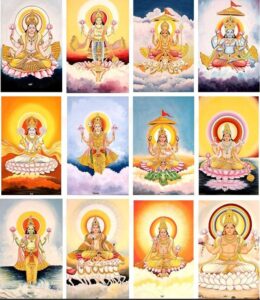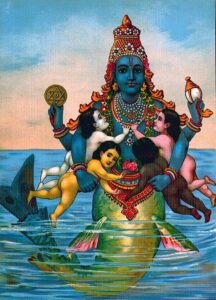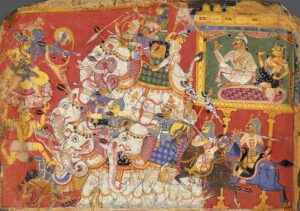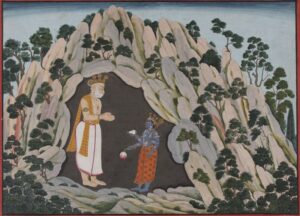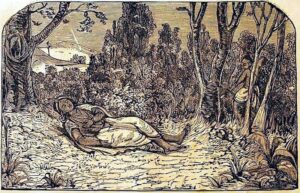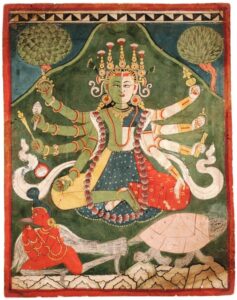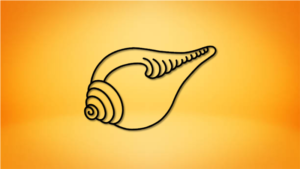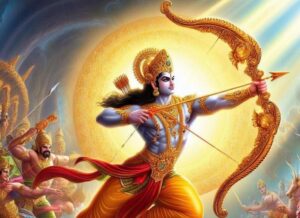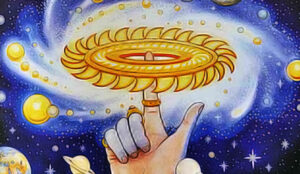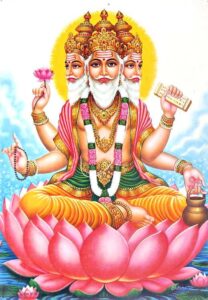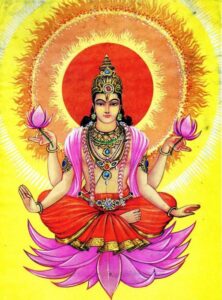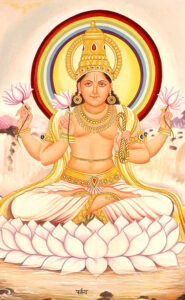Vishnu is one of the principal deities of Hinduism. He is the supreme being within Vaishnavism. Vishnu is known as The Preserver and protector within the Trimurti, the triple deity of supreme divinity that includes Brahma and Shiva.
A traditional depiction of Vishnu is as Narayana, showing him reclining on the coils of the serpent Shesha floating over the divine ocean Kshira Sagara, accompanied by his consort Lakshmi, as he “dreams the universe into reality.” His abode is Vaikuntha and his mount (vahana) is the bird king Garuda.
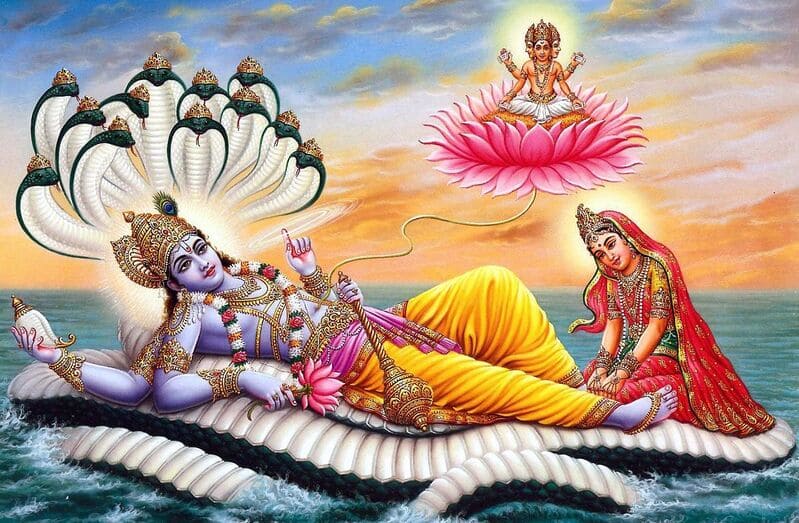
Vishnu’s role is to restore balance to the world by returning to Earth during times of trouble. Whenever the world is threatened with evil, chaos, and destructive forces, Vishnu descends as an Avatar (incarnation) to restore the cosmic order and protect dharma. The Dashavatara are the ten primary avatars of Vishnu.
Vishnu in the Rigveda was but a minor godling, whose solar activity of moving through the three regions of the universe may well have been another’s function. He was Indra’s friend and ally. When Indra slew the boar who stole the property of the Asuras (demons), Vishnu carried away the dead beast, leaving the stolen property for the gods.
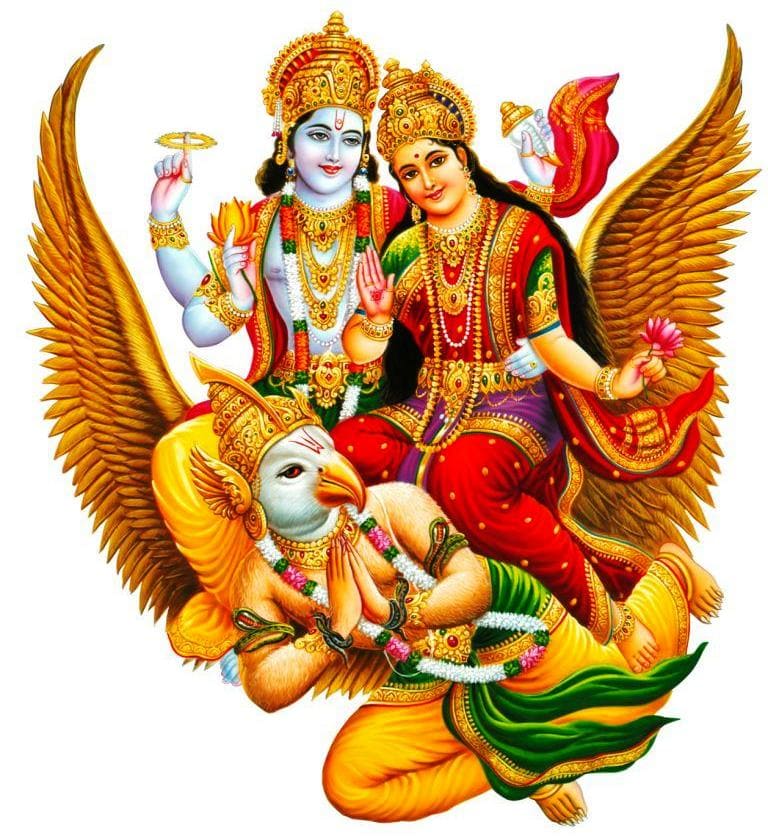
Iconography
Vishnu iconography shows him with dark blue, blue-grey or black coloured skin, and as a well-dressed jewelled man. He is typically shown with four arms, but sometimes two-armed are also found in Hindu texts on artworks.

He is normally shown as holding a conch shell (shankha named Panchajanya) between the first two fingers of one hand (left back), and a war discus (chakra named Sudarshana) in another (right back). One of his arms sometimes carries a club or mace (gada named Kaumodaki) which symbolizes authority and power of knowledge.[26] In the fourth arm, he holds a lotus flower (padma) which symbolizes purity and transcendence. The items he holds in various hands vary, giving rise to twenty-four combinations of iconography, each combination representing a special form of Vishnu.
Rarely, Vishnu is depicted bearing the bow Sharanga or the sword Nandaka. He is depicted with the Kaustubha gem in a necklace and wearing Vaijayanti, a garland of forest flowers. The Shrivatsa mark is depicted on his chest in the form of a curl of hair. He generally wears yellow garments. He wears a crown called the Kiritamukuta.
Avatars:
The concept of the avatar (or incarnation) within Hinduism is most often associated with Vishnu. The avatars of Vishnu descend to empower the good and to destroy evil, thereby restoring Dharma and relieving the burden of the Earth.
Dashavatara
The Dashavatara is a list of the Vibhavas or ’10 primary Avatars’ of Vishnu. The Agni Purana, Varaha Purana, Padma Purana, Linga Purana, Narada Purana, Garuda Purana, and Skanda Purana all provide matching lists.
The list of included avatars varies across sects and regions, particularly concerning the inclusion of Balarama (brother of Krishna) or Gautama Buddha. The order of the ancient concept of Dashavataras has also been interpreted to be reflective of modern Darwinian evolution, as a description of the evolution of consciousness
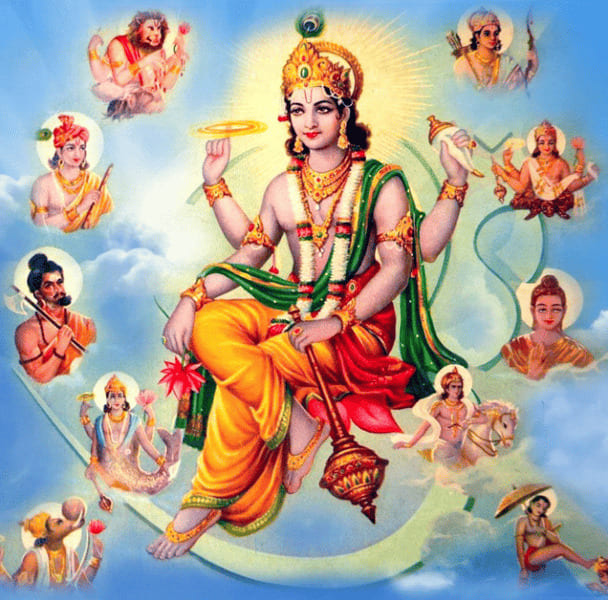
Other Vishnu Avatars
There are several manifestations of Lord Vishnu including Anantha, Harihar, Hayagriva, Mohini, Badrinath, Vittal, Balaji, Dhanvantari, Gandabherunda, Jagannatha, Kamdeva and so on.

